
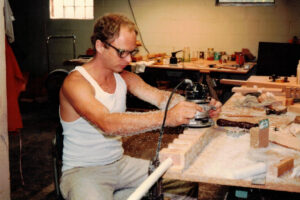
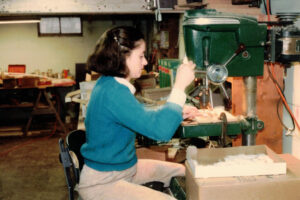
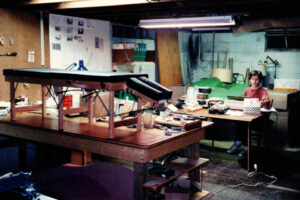
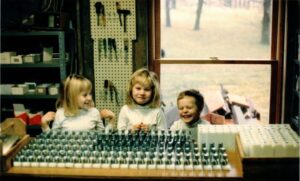
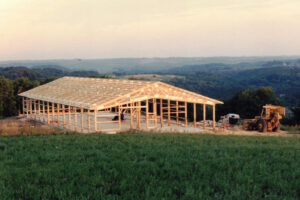
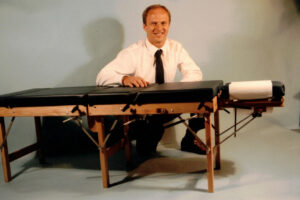
“Necessity is the mother of invention” Plato, Greek philosopher
In 1984, while a chiropractic student at Palmer College, Rick Thuli realized he needed a table to practice his chiropractic techniques on. As a landscape architect (from previous education), he had spent many years designing and building indoor and outdoor spaces. Equipped with these skills, he knew he could design a table for himself that was not only practical and of sound construction, but also equally beautiful.
But, before going forward, let’s rewind a bit to the past –
After graduating from UW-Madison, Wisconsin in 1977 with a degree in landscape architecture, Rick founded a design-and-build company. While working on a handicap-accessible addition to a home in Madison, he met his future wife Lauren, a student nurse at the time, who was helping the owner’s mother adjust to her recent physical disabilities. Rick and Lauren started dating and soon married. Inspired by his wife’s passion as an RN, Rick decided to pursue a profession in chiropractic. It was a perfect way to combine his love for hands-on architectural work with his desire to get involved in health care.
In 1982, Rick enrolled at Palmer College. As soon as he was in the clinical phase of his education, he recognized the importance of having a chiropractic table at home that would allow him to further practice his techniques. “There has to be a better way than practicing on the floor or couch”, he thought. By now, Rick and Lauren had started a family and, even though Lauren was working part-time as an RN, money was going out faster than it was coming in. Rick’s mindset of building things for himself went into full gear and he enthusiastically designed and built a portable table for himself and two of his classmates. The tables received exposure on campus and at seminars, and Rick was often asked “Can you build one for me too?” An order for 15 tables quickly turned into 45, and the demand kept growing. It was apparent that the value of a high quality portable table was becoming very popular – not only for practicing techniques at home, but it allowed students to take it with them to seminars, workshops, sporting events, and to adjust family and friends during the holidays. Many even envisioned using his solid and beautiful portable table in an office setting upon graduation.
In order to fulfill table orders, Rick took time off from his education at Palmer College and set up “shop” in his father-in-law’s garage in Milwaukee, Wisconsin. It wasn’t long before Rick and Lauren founded Thuli Tables and began exhibiting their tables at chiropractic colleges’ homecomings and continuing education seminars throughout the US. The response was overwhelming!
While still a student, the technique instructors at Palmer College also recognized Rick’s talents and asked him to design a high quality Speeder Board to use in technique classes. He eagerly did so, and Speeders have since been a valuable learning and adjusting tool, used by chiropractic students and clinics worldwide since 1985.
In 1986, Rick graduated from Palmer, became a licensed chiropractor and with his family moved to Dodgeville, Wisconsin, the town where he grew up. Should he go into practice or should he continue to design and build chiropractic tables? His love for the later made the decision easy. The garage and basement of their home in rural Dodgeville was quickly converted to a shop.
Business boomed, and Rick and Lauren needed to expand their physical space and employ some help. In 1991, they found the perfect location in rural Dodgeville to build a manufacturing facility, surrounded by beautiful rolling hills and expansive views. This is where Thuli Tables still operates today. Along with a team of skilled workers, including their grown children, Rick and Lauren remain an integral part of the day-to-day operations at Thuli Tables.
